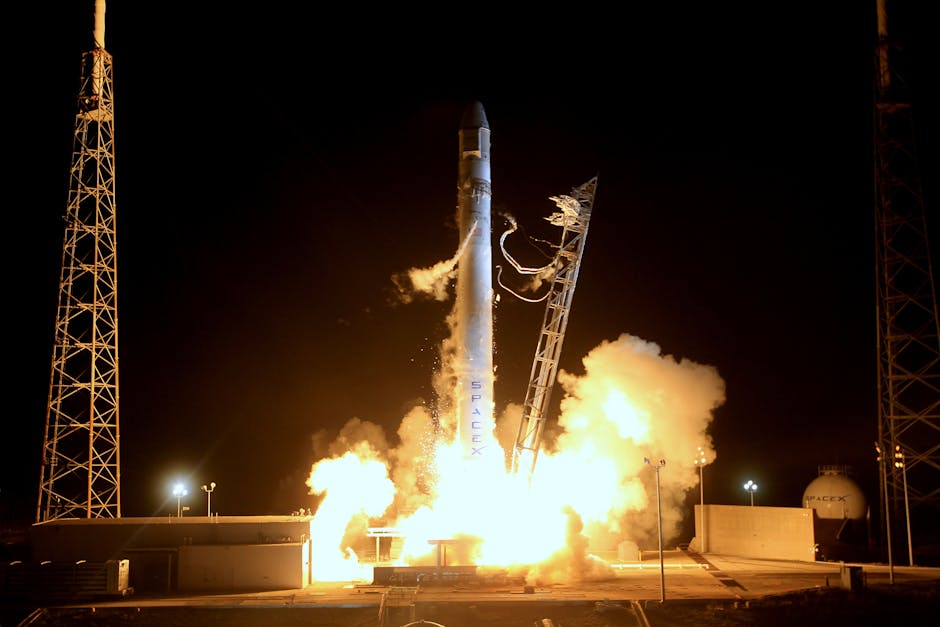The recent return of the Shenzhou-21 spacecraft, carrying astronauts Chen Dong, Chen Zhongrui, and Wang Jie, signifies a monumental achievement in China’s space program. The mission’s success underscores the country’s growing capabilities in long-duration spaceflight. You’ll learn to explore space missions and their significance. This event is a testament to the dedication of the astronauts and the technological advancements of the China Manned Space Agency (CMSA).
Table of Contents
We Also Published
Shenzhou-21’s Triumphant Return: A New Chapter in Chinese Space Exploration
The successful landing of the Shenzhou-21 return capsule marked a significant milestone, showcasing China’s advancements in space technology. This mission not only demonstrated technical prowess but also highlighted the dedication and skill of the astronauts involved. The return of Chen Dong, Chen Zhongrui, and Wang Jie after 204 days in orbit signifies a new record for the longest in-orbit stay by a Chinese crew.
Undocking and Descent: Precision in Action
At 11:14 am (Beijing Time), the Shenzhou-21 crewed spaceship detached from the space station combination. This crucial maneuver, executed with precision, initiated the return sequence. The Beijing Aerospace Control Center’s command at 2:49 pm set the stage for the orbital capsule’s separation from the return capsule. This separation is a critical step in preparing for the return to Earth.
The Role of the Brake Engine
The ignition of the brake engine was a pivotal moment. This engine’s function is to decelerate the spacecraft, enabling it to re-enter Earth’s atmosphere. The return capsule then separated from the propulsion capsule, preparing for its final descent. This entire process required precise timing and coordination to ensure a safe landing.
Landing in Inner Mongolia: A Precise Touchdown
The Shenzhou-21 return capsule touched down at 4:40 p.m. at the Dongfeng landing site in north China’s Inner Mongolia Autonomous Region. This landing site, meticulously chosen and prepared, provided a secure environment for the capsule’s arrival. The precision of the landing is a testament to the technology and the teams involved.
Astronauts’ Health and Mission Success
The China Manned Space Agency (CMSA) confirmed that the astronauts, Chen Dong, Chen Zhongrui, and Wang Jie, were in good health following their return. Their 204-day mission in orbit is a testament to their resilience and the robust support systems in place. Their successful mission is a proud achievement for China.
Charting the Future Landscape of Space Exploration
The Shenzhou-21 mission represents a leap forward in China’s space program. The extended duration of the mission, the successful execution of complex procedures, and the health of the astronauts all underscore China’s commitment to space exploration. This mission provides valuable data and experience for future endeavors, paving the way for more ambitious space projects and further expanding humanity’s footprint in the cosmos.
| Aspect | Details | Significance |
|---|---|---|
| Mission Name | Shenzhou-21 | Highlights China’s ongoing commitment to space exploration. |
| Astronauts | Chen Dong, Chen Zhongrui, Wang Jie | Demonstrates the human element and dedication to the mission. |
| In-Orbit Duration | 204 days | Sets a new record for the longest in-orbit stay by a Chinese crew. |
| Landing Site | Dongfeng landing site, Inner Mongolia | Shows the precision and planning of the mission. |
| Key Events | Undocking, return command, capsule separation, brake engine ignition, landing | Illustrates the complex steps involved in a successful space mission. |
Also Read
From our network :
- Limit Superior and Inferior
- JD Vance Charlie Kirk: Tribute and Political Strategy
- Optimizing String Concatenation in Shell Scripts: quotes, arrays, and efficiency
- Limits: The Squeeze Theorem Explained
- The Diverse Types of Convergence in Mathematics
- Economic Importance of Soybeans in America: The $60 Billion Crop That Feeds the World
- Bitcoin Hits $100K: Crypto News Digest
- Optimizing String Concatenation in JavaScript: Template Literals, Join, and Performance tips
- Bitcoin price analysis: Market signals after a muted weekend
RESOURCES
- Why Go to Space - NASA
- Space Exploration Missions | The Planetary Society
- Space exploration - Wikipedia
- What are your predictions for space exploration this century to the ...
- Space exploration | History, Definition, & Facts | Britannica
- A Brief History of Space Exploration | The Aerospace Corporation
- SpaceX
- Solar System Exploration
- The Exploration Company: Home
- Mars Exploration - NASA Science
- Why Should We Explore Space? What Are the Benefits for Us ...
- Explore - Space Exploration
- Space Science and Engineering | Johns Hopkins University Applied ...
- Space Exploration Merit Badge | Scouting America
- Best ways to explore Kerbin. - Kerbal Space Program Forums








0 Comments